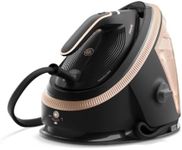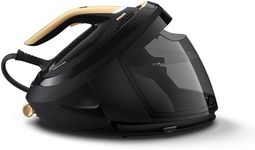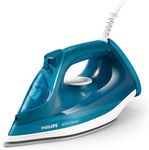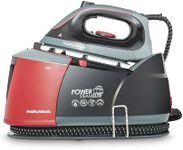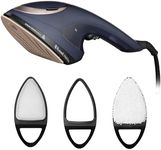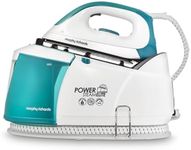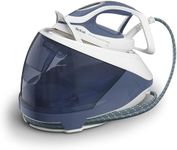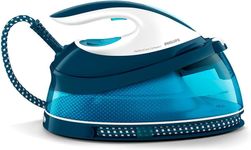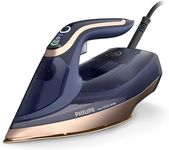Buying Guide for the Best Steam Irons
Choosing the right steam iron can make a significant difference in your ironing experience. A good steam iron should be easy to use, effective at removing wrinkles, and durable. When selecting a steam iron, consider the following key specifications to ensure you find the best fit for your needs.Steam OutputSteam output refers to the amount of steam the iron produces, usually measured in grams per minute. This spec is important because higher steam output can help remove wrinkles more efficiently. Steam output can be divided into segments: low (up to 20 g/min), medium (20-40 g/min), and high (above 40 g/min). If you frequently iron heavy fabrics or have a lot of clothes to iron, a higher steam output will be beneficial. For occasional ironing or lighter fabrics, a lower steam output may suffice.
Water Tank CapacityThe water tank capacity indicates how much water the iron can hold, which affects how often you need to refill it. This is important because a larger tank means less frequent refilling, making the ironing process more convenient. Water tank capacities can range from small (up to 200 ml), medium (200-300 ml), and large (above 300 ml). If you have a lot of ironing to do, a larger tank will save you time. For occasional use, a smaller tank may be adequate.
Soleplate MaterialThe soleplate is the flat surface of the iron that comes into contact with your clothes. The material of the soleplate affects its durability, glide, and heat distribution. Common materials include stainless steel, ceramic, and non-stick coatings. Stainless steel is durable and glides well, ceramic offers even heat distribution and is gentle on fabrics, and non-stick coatings prevent sticking and are easy to clean. Choose a soleplate material based on your ironing habits and the types of fabrics you typically iron.
WeightThe weight of the steam iron can impact your comfort and ease of use. A heavier iron may provide better pressing power but can be tiring to use for extended periods. Conversely, a lighter iron is easier to maneuver but may require more effort to remove wrinkles. Weights can be categorized as light (up to 1 kg), medium (1-1.5 kg), and heavy (above 1.5 kg). Consider your strength and the duration of your ironing sessions when choosing the weight of your iron.
Cord LengthCord length determines how far you can move the iron from the power outlet, which can affect your ironing setup and convenience. A longer cord provides more flexibility and ease of movement, while a shorter cord may limit your range. Cord lengths typically range from short (up to 2 meters), medium (2-3 meters), and long (above 3 meters). If you have a dedicated ironing space with a nearby outlet, a shorter cord may be sufficient. For more flexibility, opt for a longer cord.
Anti-Drip FunctionThe anti-drip function prevents water from leaking out of the iron when the temperature is too low to produce steam. This is important to avoid water stains on your clothes and ensure a smooth ironing experience. If you often iron delicate fabrics at lower temperatures, an anti-drip function is particularly useful. For general use, it can still be a helpful feature to prevent any accidental water leakage.
Auto Shut-OffAuto shut-off is a safety feature that turns off the iron automatically after a period of inactivity. This is important for preventing accidents and conserving energy. Auto shut-off times can vary, typically ranging from a few minutes to around 10 minutes. If you tend to forget to turn off your iron or want extra peace of mind, this feature is highly recommended. For those who are always attentive, it may be less critical but still a good safety measure.

